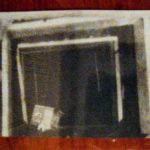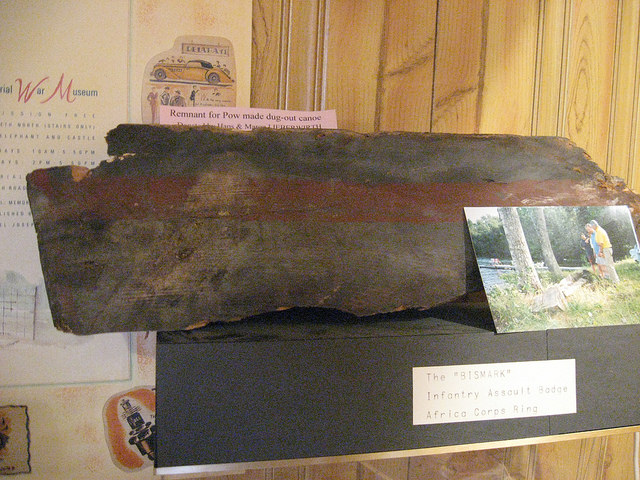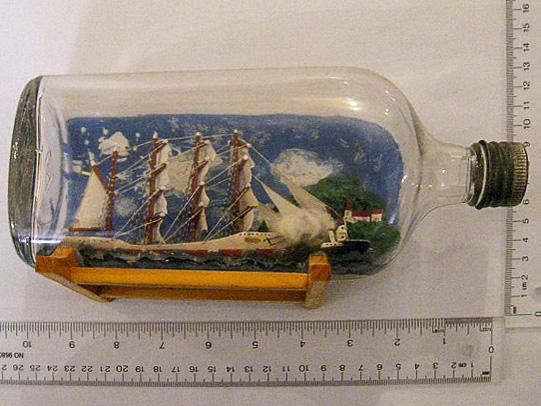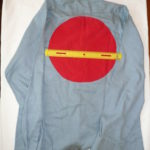Bob Henderson sent me a copy of a letter from 1945 showing some of the problems the Government of Canada had when the prisoner of war clothing supply kept shrinking. Not the garments themselves. The whole pile!
I typed out the letter below the picture.
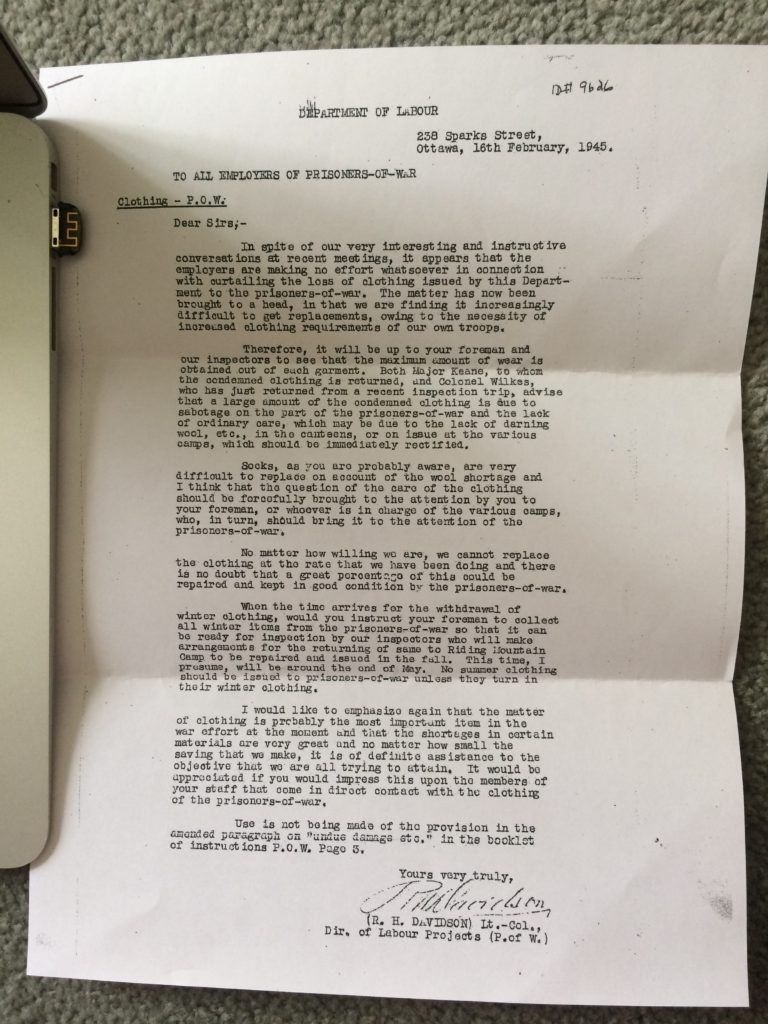
Letter describing some problems when prisoner clothing disappeared
Here’s what the letter says.
Department of Labour, 238 Sparks Street, Ottawa
16th February, 1945
TO ALL EMPLOYERS OF PRISONERS-OF-WAR
Clothing – P.O.W
Dear Sirs;–
In spite of our very interesting and instructive conversations at recent meetings, it appears that the employers are making no effort whatsoever in connection with curtailing the loss of clothing issued by this Department to the prisoners-of-war. The matter has now been brought to a head, in that we are finding it increasingly difficult to get replacements, owing to the necessity of increased clothing requirements of our own troops.
Therefore, it will be up to your foreman and our inspectors to see that the maximum amount of wear is obtained out of such garment. Both Major Keane, to whom the condemned clothing is returned, and Colonel Wilkes, who has just returned from a recent inspection trip, advise that a large amount of the condemned clothing is due to sabotage on the part of the prisoners-of-war and the lack of ordinary care, which may be due to the lack of darning wool, etc., in the canteens, or on issue at the various camps, which should be immediately rectified.
Socks, as you are probably aware, are very difficult to replace on account of the wool shortage and I think that the question of the care of the clothing should be forcefully brought to the attention by you to your foreman, or whoever is in charge of the various camps, who, in turn, should bring it to the attention of the prisoners-of-war.
No matter how willing we are, we cannot replace the clothing at the rate that we have been doing and there is no doubt that a great percentage of this could be repaired and kept in good condition by the prisoners-of-war.
When the time arrives for the withdrawal of winter clothing, would you instruct your foreman to collect all winter items from the prisoners-of-war so that it can be ready for inspection by our inspectors who will make arrangements for the returning of same to Riding Mountain Camp to be repaired and issued in the fall. This time, I presume, will be around the end of May. No summer clothing should be issued to prisoners-of-war unless they turn in their winter clothing.
I would like to emphasize again that the matter of clothing is probably the most important item in the war effort at the moment and that the shortages in certain materials are very great and no matter how small the saving that we make, it is of definite assistance to the objective that we are all trying to attain. It would be appreciated if you would impress this upon the members of your staff that come in direct contact with the clothing of the prisoners-of-war.
Use is not being made of the provision in the amended paragraph on “undue damage etc.” in the booklet of instructions P.O.W. Page 3.
Yours very truly,
(R. H. DAVIDSON) Lt. -Col.,
Dir. of Labour Projects (P. of W.)


